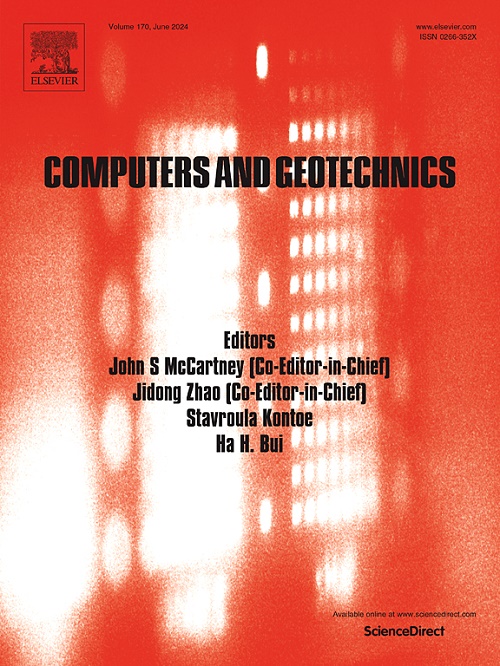Face failure mechanism of fault tunnels under high-temperature and high-pressure conditions using the discrete element method
IF 5.3
1区 工程技术
Q1 COMPUTER SCIENCE, INTERDISCIPLINARY APPLICATIONS
引用次数: 0
Abstract
The study of high ground stress, high ground temperature and adverse geological formations during deep-buried mountain tunnel construction holds substantial theoretical and practical significance. The failure process and mechanism of the fault tunnel face under high-temperature and high-pressure conditions are investigated through the discrete element method considering the thermo-mechanical coupling model. Initially, this method is validated by simulating the steady-state heat conduction and thermal cracking process of the disk with a hole. Subsequently, the effects of different high temperatures on the mass of gravel rushing into the tunnel, the expansion rate and rang of the fault failure zone are discussed. Finally, the micromechanical characteristics, including the magnitude and orientations of contact forces within the fault, are analyzed. The results indicate that with the increase of temperature, the mass of gravel rushing into the tunnel increases, and the expansion rate and range of fault failure zone increase. Under high-temperature and high-pressure conditions, the contact forces within the fault are strengthened, and the reinforcing effect of the pressure arch becomes more pronounced. For deep-buried mountain tunnel projects, particularly those intersecting faults, it is imperative to focus on the risk of inrush hazards posed by fault gravel in tunnel sections with high ground temperature.
求助全文
约1分钟内获得全文
求助全文
来源期刊

Computers and Geotechnics
地学-地球科学综合
CiteScore
9.10
自引率
15.10%
发文量
438
审稿时长
45 days
期刊介绍:
The use of computers is firmly established in geotechnical engineering and continues to grow rapidly in both engineering practice and academe. The development of advanced numerical techniques and constitutive modeling, in conjunction with rapid developments in computer hardware, enables problems to be tackled that were unthinkable even a few years ago. Computers and Geotechnics provides an up-to-date reference for engineers and researchers engaged in computer aided analysis and research in geotechnical engineering. The journal is intended for an expeditious dissemination of advanced computer applications across a broad range of geotechnical topics. Contributions on advances in numerical algorithms, computer implementation of new constitutive models and probabilistic methods are especially encouraged.
 求助内容:
求助内容: 应助结果提醒方式:
应助结果提醒方式:


